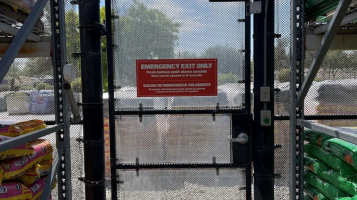sutefamily
REGISTERED
I am interested in finding out about the egress code for a school playground that is in a courtyard, surrounded on three sides by the school and the 4th side by a 6 foot high fence. We recently had our policy changed so that all of the doors that exit from the playground back into the school remain locked from the inside at all times. Just one door is accessible from the playground by a key card system. The 6 foot fence has 2 gates that remain padlocked at all times.
The public school houses all children under the age of 4 and is a licensed childcare center in Michigan. They are responsible for following Michigan childcare code as well as any public school or other codes, as far as I know.
My concern stems from the fact that if there is a fire, or active shooter at the only means of egress from the playground (the one door that is accessible with the key card) then we would be trapped on the playground with no means of escape. If the staff happens to forget the keycard, there is literaly no means of egress.
Is it legal for all means of egress to be locked like this? I have attached a diagram of the courtyard here.
The public school houses all children under the age of 4 and is a licensed childcare center in Michigan. They are responsible for following Michigan childcare code as well as any public school or other codes, as far as I know.
My concern stems from the fact that if there is a fire, or active shooter at the only means of egress from the playground (the one door that is accessible with the key card) then we would be trapped on the playground with no means of escape. If the staff happens to forget the keycard, there is literaly no means of egress.
Is it legal for all means of egress to be locked like this? I have attached a diagram of the courtyard here.


